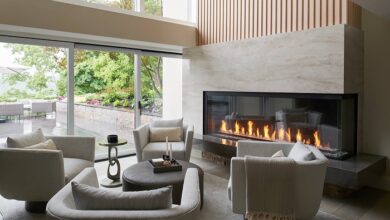The scope of use of clinker tiles and its main advantages
Clinker tiles, having become widespread in the nineteenth century from Holland, have firmly taken a position in the market of facing materials of the Russian Federation. Thanks to the firing of ceramics, at a temperature of up to one thousand five hundred degrees, strength and stability are achieved, which allows the use of tiles as cladding not only indoors, but also outside. Can be produced by extrusion or semi-dry pressing of clay. A variety of such tiles, the so-called “technical clinker” is used even for paving roads and streets, and therefore, it has long replaced the ancient “stone paving stones” in European countries.
Externally, the clinker tile is very similar in color and shape to a brick. The color palette of clinker tiles in Moscow is limited to natural stone shades. You are invited to choose from sand shades to brick, from stone gray, up to a palette of shades of wet asphalt. Due to its strength, clinker tiles have an advantage over ceramic floor tiles.
Unlike the latter, clinker has a warranty period issued by the manufacturer up to thirty years, due to which it is widely used to cover both street thresholds and steps, and the floor of public premises. Ceramic tiles, when used outdoors or in public areas, must be replaced on average every five years. In severe winter conditions, clinker tiles are suitable for laying outdoor steps, and the texture of its surface will prevent slipping. Thus, despite the cost of clinker tiles, prices are here /klinker-i-stepeni.html, taking into account the service life, the clinker will still become more economical than the usual tile.
The tile does not require special care, it is easy to clean with plain water even without the use of chemicals. Being cheaper than brick, it is often used for decorative finishing of building walls and fences. Allows you to insulate the building by attaching a layer of foam or other insulation between the wall of the building and the tiles, which is very important for old buildings. The only drawback of clinker, perhaps, is its exactingness to a flat surface. So for laying clinker tiles, buy a level. Any irregularities will shorten the life of the tile, which will simply crack and crumble.
In addition to all the advantages of outdoor use, designers often resort to using clinker indoors. Due to the external resemblance to brick and stone shades, it is often used for laying in the lower part of the wall, finishing doorways and windows. For lovers of minimalism and classics, it is ideal for decorating the walls of cabinets. Practical for use in swimming pools and saunas.



